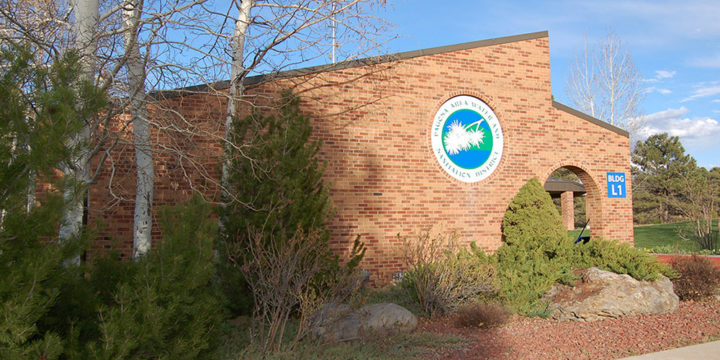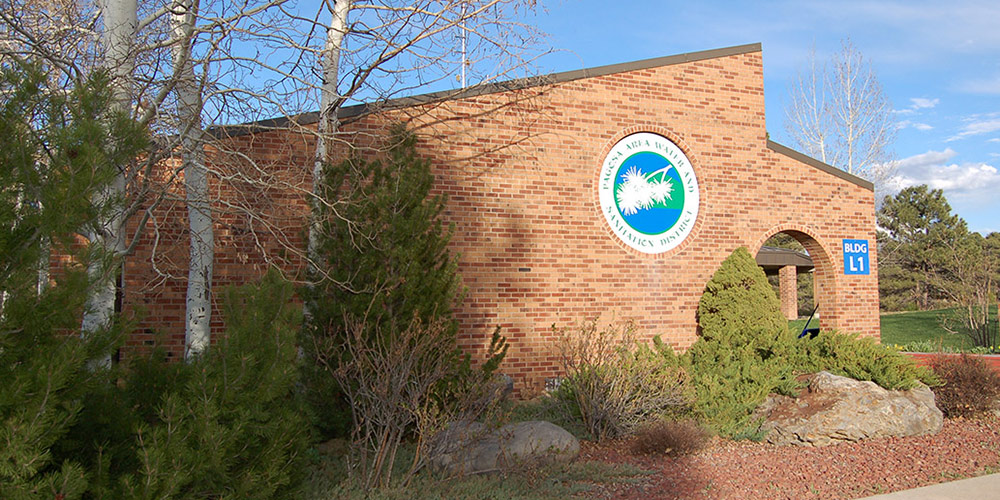PAWSD experiences many of the same cost increases that have affected private enterprise. Some of the largest cost increases have been the cost of property and liability insurance as well as energy…
— From the Pagosa Area Water and Sanitation District website
Yesterday in Part One, we shared a very brief overview of the 2018 Drought Management Plan recently approved by the Pagosa Area Water and Sanitation District (PAWSD) board of directors. We mentioned that PAWSD holds a number of water rights — diversion rights (fresh, flowing water) and storage rights (water that sits around in reservoirs getting old) — and we mentioned that the diversion rights — all totaled — are equal to about 10 times the drinking water demand served by PAWSD annually. But some of the diversion rights are available for only part of the year, so the equation is not a simple one.
We do know, however, that just one of those diversion rights — from the West Fork Diversion — is available year round, and could provide, all by itself, about twice the amount of raw water PAWSD needs to service its drinking water customers. So, in theory, our community’s primary water provider doesn’t seem to have a shortage of diversion rights, currently.
On top of the diversion of fresh, flowing water, PAWSD stores a lot of water in its reservoirs: Lake Hatcher, Stevens Reservoir, Lake Pagosa, Pinon Lake, Village Lake, and Lake Forest. The useable storage totals roughly 4,000 acre-feet, if all the reservoirs are full. PAWSD treats about 1,700 acre-feet each year. So, in theory, the water district has more than a two-year supply of water sitting in its reservoirs.
In theory, then, PAWSD has water rights equal to about 12 times the amount of water they need to service their customers.
But that’s only “in theory.”
The PAWSD distribution system, meanwhile, has some problems. It appears to be leaking about 30-40 percent of our drinking water between the PAWSD treatment plants and the customers’ water taps. If we could get all of those leaks fixed, PAWSD would have (in theory) about 18 times the water rights needed to service its customers.

The reality at PAWSD is that they’re a publicly-owned business that funds its operations by selling a product: treated water. (They also do sewage treatment, but that’s a discussion for another day.) PAWSD doesn’t don’t pay anything for the raw water they obtain, but there’s a lot of expense involved in creating and delivering safe drinking water — mostly in the form of wages and benefits. According to the 2018 PAWSD budget the District will spend, this year:
1. About $1.2 million on general administration
2. About $2.9 million paying off its debts
3. About $4.7 million treating and delivering drinking water
4. About $2.4 million treating sewage
Leaving sewage treatment (and sewage treatment debt) out of the equation, we see that PAWSD needs to bring in about $8.4 million annually to run its water business. A portion of that money comes in via property taxes (about $2.2 million) but most of the rest comes from the sales of drinking water and related services (about $5.3 million.)
When Mother Nature and her complicated weather systems fail to provide the amount of raw water to which we’ve become accustomed, the folks at PAWSD are caught in something of a bind. They understand that we all need to become more careful about our water use during drought conditions, but they also make most of their money by selling water.
From the 2018 Drought Management Plan:
It is commonly understood that a reduction in water demand is generally followed by a reduction in revenue. It is also true that there is a relationship between price and demand in that as the price increases, the demand generally decreases. In light of this, PAWSD may impose a drought surcharge or modified rate structure to accomplish two things:
1. Reduce water demand.
2. Ensure financial stability during times of decreased water deliveries.
For 2018, it appears that PAWSD will begin to “encourage” us to use less water. The reservoirs are full, and the rivers and streams are still flowing; we have enough water to get us through 2018. But the future is uncertain. Currently, PAWSD considers its customers to be under the “Voluntary” stage of drought management, which will entail some kind of ‘education’ program. They don’t plan to increase their fees, or place any surcharges on your water bill in 2018.
We might ask ourselves… if everyone in the PAWSD district carefully reduced their water use by 10 percent… would PAWSD then find itself with a 10 percent budget deficit? Not at all. Many households and businesses use less than the minimum amount of water included in the “base charge” on their water bill. Further reducing water use will not, in such cases, reduce their monthly payment — nor will it reduce PAWSD revenues significantly. PAWSD should be able to pay its employees their normal wages and benefits under the “Voluntary” management program.
But…
The next stage of drought management is called “Level 1.” If we reach that stage due to declining reservoir levels or reduced stream flows, PAWSD will start prohibiting daytime landscape watering; irrigation will be allowed only between 9pm and 9am. The goal, for Level 1, is to reduce water use by up to 20 percent.
The 2018 Drought Management Plan recognizes that, when Level 1 kicks in, the revenue deficit from reduced water sales is going to become noticeable. So PAWSD will begin adding a “surcharge” to your water bill. In other words, you will start paying PAWSD for the water you have been told not to use. (In actuality, of course, you will be paying for the employee wages and benefits that continue regardless of drought conditions.)
The surcharge will continue if we hit Level 2 of the drought management plan, but the controls and penalties will increase. You will be able to water your garden only on certain days, and if you use more than 4,000 gallons (typical use for a family with typical landscaping) you will pay twice the standard fee for every gallon over 4,000 gallons. For commercial users, the standard allowance will be 6,000 gallons, with doubled charges for every gallon beyond that amount.
The penalties get progressively more severe at Levels 3 and 4.
As the Drought Management Plan notes, a water district that increases its fees will see a drop in water use — which will decrease the district’s revenues, unless the increased fees can make up for the decreased number of gallons sold.
Obviously, this is a financial juggling act. But it gets even a bit more weird, over the long haul. Yes, PAWSD can temporarily increase its fees during a drought, while also encouraging water conservation. They did just that during the 2002 drought.
And a strange thing happened.

